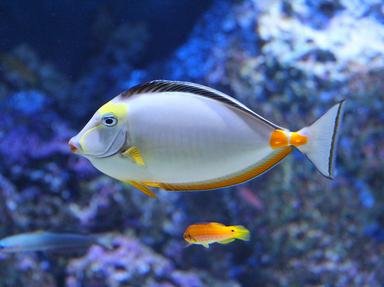Quiz Answer Key and Fun Facts
1. One of the first fish I encountered while diving was this well-known predator. Usually known to ambush their prey with their powerful jaws and distinctive underbite, which scaly fish did I see?
2. Near the bottom of the reef we were diving across I encountered our next specimen. Called a channel clinging crab or a West Indian spider crab, why is this family of crabs actually known as "spider" crabs?
3. Still swimming along the bottom of the reef, I next encountered this species of moray eel. What is the specific or descriptive name for this 'freckled' slithery fish?
4. Later on in my dive I encountered a different kind of eel, a green moray eel. Despite their yellowish appearance, what is their actual skin colour?
5. I was very lucky to see the next specimen, the hawksbill sea turtle. Ok, it's not a fish, however, why was I lucky?
6. Floating right along, the next fish I bumped into was this ray. Known as either the chupare stingray or the Caribbean whiptail stingray, is this an electric species of ray?
7. One of the stranger fish you might see while diving off of Cuba is the flat needlefish. What does the flat needlefish lack that many other fishes have?
8. In the middle of a reef I noticed the next specimen, the longspine squirrelfish. It is a fiercely territorial fish, and will even defend its area from moray eels. How does it do that?
9. All throughout the dive we saw sharks. Yes, sharks; nurse sharks to be exact. Do nurse sharks need to stay in motion in order to be able to breathe?
10. Near the end of the dive, I saw this majestic ray gliding past. Known as the spotted eagle ray, why was I happy not to have actually 'bumped' into the ray?
Source: Author
LeoDaVinci
This quiz was reviewed by FunTrivia editor
crisw before going online.
Any errors found in FunTrivia content are routinely corrected through our feedback system.

